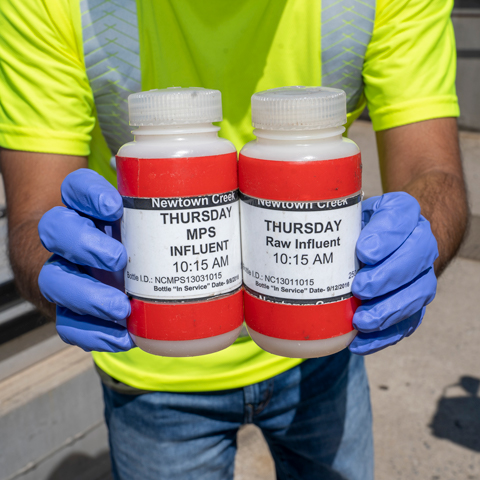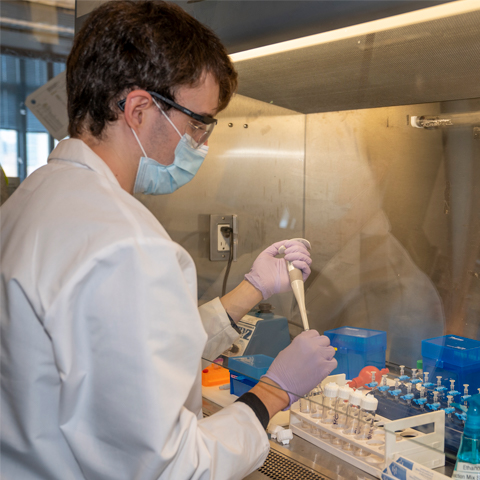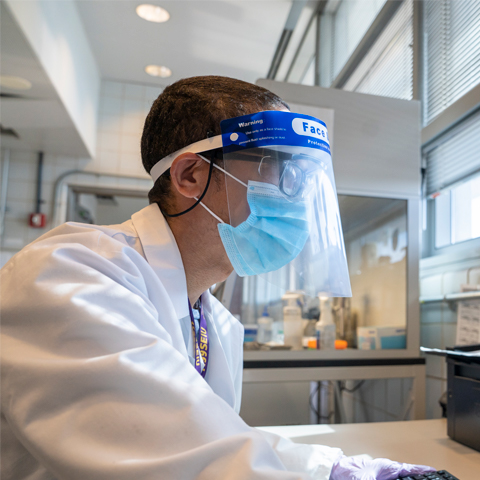
 Environmental Protection311
Environmental Protection311 Search all NYC.gov websites
Search all NYC.gov websites
Program Overview
Since 2020, DEP has been implementing monitoring techniques to look for SARS-CoV-2 in wastewater. This program is done in partnership with the Department of Health and Mental Hygiene (DOHMH). It helps inform the City’s COVID-19 response.
The work has the potential to identify hot spots and provide early warnings about disease spread. Similar programs have been established in other cities around the country and the world.
View the SARS-CoV-2 concentrations measured in NYC Wastewater on NYC Open Data and download the Wastewater Testing Pilot Program Report (Local Law 28 of 2021).

What are we doing?
We collect samples from all 14 Wastewater Resource Recovery Facilities twice per week. The testing covers every neighborhood in the city.
The samples are analyzed at the Newtown Creek Microbiological Laboratory. The analysis is complete three days after the sample is taken.
The data is sent to the DOHMH on a daily basis. DOHMH is examining the data and determining how the information could help identify virus patterns and inform actions to fight COVID-19 around the city.

How does it work?
The virus is present in the human gastrointestinal tract. When someone is infected with COVID-19, ribonucleic acid (RNA) from the virus is shed in for about a month.
This testing does not simply determine whether the RNA is present or not. The testing quantifies the volume of RNA present and tracks trends in concentrations.
NOTE: There is no credible evidence that coronavirus can be transmitted from sewage. Genetic material is present, not infectious virus.

What comes next?
We are working directly with a team from City University of New York, New York University, Stanford University, the University of Michigan, and leading utilities from across the US to improve the collection and analysis processes.
Preparing for the long term, DEP is building a program that can used in the future to monitor sewage for potential outbreaks of a number of viruses, including seasonal flu.


